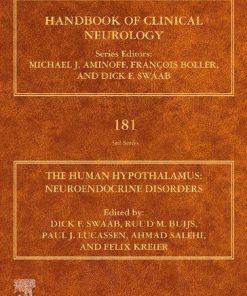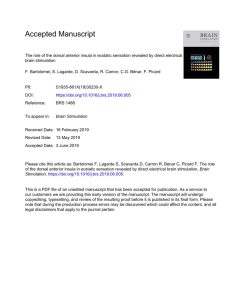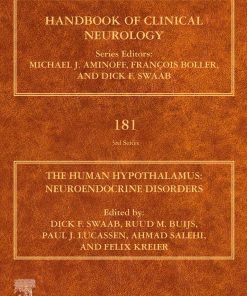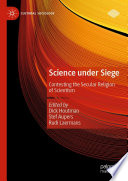The Human Hypothalamus Anterior Region 1st edition by Dick Swaab 0128201088 9780128201084
$50.00 Original price was: $50.00.$25.00Current price is: $25.00.
The Human Hypothalamus: Anterior Region 1st edition by Dick F. Swaab – Ebook PDF Instant Download/DeliveryISBN: 0128201088 9780128201084
Full download The Human Hypothalamus: Anterior Region 1st edition after payment.
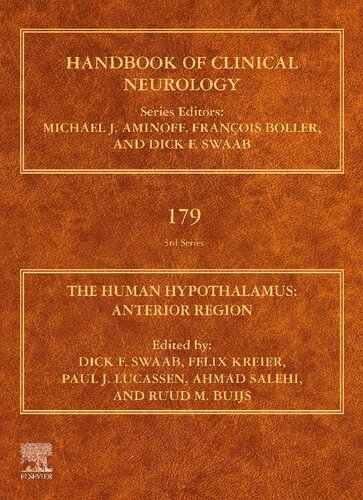
Product details:
ISBN-10 : 0128201088
ISBN-13 : 9780128201084
Author : Dick F. Swaab
The Hypothalamus is an important area of the brain for understanding a variety of neurological disorders. This volume summarizes for readers the anatomy and physiology of the middle and posterior hypothalamus, to better understand pathology and treatment of hypothalamus related disorders. In addition to anatomy and physiology in humans, cytoarchitecture and chemoarchitecture in rodents is provided. The volume explores the role of the hypothalamus in disorders of eating, sleeping, anxiety, and mood, as well as its role in sexual behavior and gender identity. Coverage includes how Parkinson’s, Alzheimer’s and other neurological disorders relate to the hypothalamus.
The Human Hypothalamus: Anterior Region 1st Table of contents:
Chapter 1: Introduction: The middle and posterior hypothalamus
Section 6: Supraoptic and Paraventricular Nucleus: More Than a Neuroendocrine System
Section 7: Zona Incerta
Section 8: Ventromedial Nucleus and Dorsomedial Nucleus
Section 9: Circumventricular Organs of the Hypothalamus
Section 10: Lateral Tuberal Nucleus
Section 11: Lateral Hypothalamic Area, Perifornical Area
Section 12: Tuberomamillary Complex
Section 13: Subthalamic Nucleus
Section 14: Corpora Mamillaria, Fornix, and Mamillothalamic Tract
Introduction: Lateral tuberal nucleus
Section 6: Supraoptic and paraventricular nucleus more than a neuroendocrine system
Chapter 2: Vasopressin and oxytocin beyond the pituitary in the human brain
Abstract
Accessory Magnocellular Neuroendocrine System of the Hypothalamus
Vasopressin- and Oxytocin-Containing Neurons and Fibers in the Forebrain
Vasopressin and Oxytocin Are Involved in Motivated Social Behavior
Localization of the Neurons Involved in Behavioral and Physiological Functions and Targeted by Vasopressinergic and Oxytocinergic Nerve Fibers
Vasopressin in the Suprachiasmatic Nucleus
Vasotocin, Vasopressin, and Oxytocin in the Mammalian Pineal Gland
Conclusions
Chapter 3: Central and peripheral release of oxytocin: Relevance of neuroendocrine and neurotransmitter actions for physiology and behavior
Abstract
Introduction
Organization of the Hypothalamic–Neurohypophyseal (HHNS) System
Parvocellular Oxytocin Neurons of the Hypothalamus: Master Cells Arranging the HHNS Activity?
Heterogeneity of Oxytocin Neurons
Synaptic vs Nonsynaptic Oxytocin Release
Intracellular Oxytocin Receptor Signaling
Oxytocin System in Monkeys and Human
Oxytocin in Human Health
Perspectives
Acknowledgments
Chapter 4: Organization of the neuroendocrine and autonomic hypothalamic paraventricular nucleus
Abstract
Introduction
Hypothalamic Integration of Time of Day
Control of the Daily Rhythm in HPA axis Activity
Control of the Daily Rhythm in HPT Axis Activity
Control of the Daily Rhythm in Prolactin Release
Control of the Daily Rhythm in Pineal Melatonin Release
Control of the Daily Rhythm in Plasma Glucose Concentrations
Control of the Daily Rhythm in Feeding-Induced Insulin Responses
Multiple Subpopulations of Preautonomic Neurons
Future Perspective
Chapter 5: Sex differences of oxytocin and vasopressin in social behaviors
Abstract
Introduction
Models and Interventions
Sexually Dimorphic Influences of OT on Social Cognition
Sexually Dimorphic Influences of VP on Social Cognition
Effects of OT and VP on Social Cognition of Women During Pregnancy, Birth, and Lactation
Discussion
Chapter 6: Oxytocin, eating behavior, and metabolism in humans
Abstract
Oxytocin Neurophysiology—Relation to Energy Homeostasis
Endogenous Oxytocin Levels, Eating Behavior, and Metabolic Status in Humans
The Effects of Oxytocin Administration on Caloric Intake and Metabolism
The Effects of Oxytocin Administration in Individuals with Obesity and Suspected Insult to Oxytocin Pathways
Therapeutic Opportunities and Challenges
Competing interests statement
Chapter 7: The supraoptic and paraventricular nuclei in healthy aging and neurodegeneration
Abstract
The Supraoptic and Paraventricular Nuclei in Healthy Aging
The Supraoptic and Paraventricular Nuclei in Neurodegeneration
Conclusion
Chapter 8: Perinatal stress and epigenetics
Abstract
Introduction: DNA Methylation and Cellular Identity
DNA Methylation and Gene Function
Epigenetic Programming of the HPA Axis by Maternal Behavior and Its Reversal by Epigenetic Regulators
Early Life Stress-Mediated Epigenetic Reprogramming of the HPA axis: Epigenetic Changes in the Hypothalamus
Early Life Stress/Adversity Causes Broad Epigenetic Changes Across the Genome Which Are Evolutionary Conserved
The Effect of Early Life Stress/Adversity-related Broad Epigenetic Changes in Peripheral Tissues Outside the HPA Axis
Socioeconomic Positioning and Epigenetic Programming
Early Life Stress and PTSD
Cross-Generational Effects of Trauma
Early Life Stress Methylation and Metabolic Control
Epigenetic Processes Mediating Effects of Stress During Adulthood
DNA Methylation Programming of the HPA axis in Response to ELS: A Genomic Mechanism of Adaptation
Dynamic Epigenetic Programming in Response to Early Life Experience: Setting up Future Gene Expression Trajectories
What Are the Mechanisms that Mediate Between Experience and DNA Methylation Alterations in the HPA axis and Somatic Tissues and What are their Functional Roles?
Summary and Perspective
Acknowledgment
Chapter 9: The hypothalamus in anxiety disorders
Abstract
Introduction
Oxytocin
Corticotropin-Releasing Hormone
Thyrotropin-Releasing Hormone
Conclusion
Acknowledgment
Chapter 10: Congenital isolated central hypothyroidism: Novel mutations and their functional implications
Abstract
Introduction
Hypothyroidism
Genetics of Congenital Isolated Central Hypothyroidism
Central Hypothyroidism and Neonatal Screening
Congenital Central Hypothyroidism—Clinical Aspects
Concluding Remarks
Section 7: Zona incerta
Chapter 11: The zona incerta system: Involvement in attention and movement
Abstract
Introduction
Organization of the Zona Incerta
Connections of the Zona Incerta
Overall Functional Networks of the Zona Incerta
Conclusions
Section 8: Ventromedial nucleus and dorsomedial nucleus
Chapter 12: The role of the dorsomedial and ventromedial hypothalamus in regulating behaviorally coupled and resting autonomic drive
Abstract
DMH and VMH Locations and Anatomical Projection Patterns
DMH and Cardiovascular Control
VMH and Cardiovascular Control
Conclusions
Section 9: Circumventricular organs of the hypothalamus
Chapter 13: The subfornical organ and organum vasculosum of the lamina terminalis: Critical roles in cardiovascular regulation and the control of fluid balance
Abstract
Introduction
General Anatomy
Systemic or Local Administration Studies Demonstrating a Synergistic Role in Fluid Balance and Cardiovascular Regulation
Physiological and Hormonal Activation in the Lamina Terminalis—c-Fos Studies
Electrophysiological Evidence for a Role of Lamina Terminalis in Cardiovascular Regulation
Studies Demonstrating That SFO and OVLT Are Dynamic Sensors
Optogenetic and Chemogenetic Studies
Human Studies
Overview
Chapter 14: Lamina terminalis fenestration: An important neurosurgical corridor
Abstract
Introduction
Lamina Terminalis Anatomy
When to Perform Lamina Terminalis Fenestration
How Is Lamina Terminalis Fenestration Performed?
Discussion
Chapter 15: Arcuate nucleus, median eminence, and hypophysial pars tuberalis
Abstract
Brief Overview
Cytoarchitecture of the Arcuate Nucleus-Median Eminence Complex
Neuronal Populations in the Arcuate Nucleus: Neurotransmitters, Neuropeptides, Hormones, and Their Physiological Roles
Neuropeptides, Transmitters, and Peripheral Hormones Involved in Energy Homeostasis
Neuropeptides in the Arcuate Nucleus Involved in Control of Reproduction and Fertility
Median Eminence and the Blood–Brain-Barrier
Tanycytes in the ARC-ME Complex
Hypophysial Pars Tuberalis
Overall Morphological Features, Cell Types, and Messenger Molecules of the Pars Tuberalis
Future Perspectives on the Human ARC-ME
Diseases and Malfunctions Involving the ARC-ME Complex
Chapter 16: Tanycytes in the infundibular nucleus and median eminence and their role in the blood–brain barrier
Abstract
Introduction
The Origin and Classification of Tanycytes
Tanycytic Morphology
Functional Specialization of Tanycytes
Conclusions
Acknowledgments
Chapter 17: The human hypothalamic kisspeptin system: Functional neuroanatomy and clinical perspectives
Abstract
Central Kisspeptin Signaling in Puberty and Adult Reproductive Physiology
Kisspeptin Signaling in Peripheral Tissues
Functional Anatomy of Kisspeptin Neurons and Receptors in the Animal Brain
Neuroanatomy of the Human Hypothalamic Kisspeptin System
Anatomic and Neurochemical Plasticity
Newly Emerging Functions of Kisspeptin in Emotions, Mood, and Reproductive Behavior
Some Clinical Perspectives
Conclusions
Acknowledgments
Chapter 18: Kisspeptin and neurokinin B expression in the human hypothalamus: Relation to reproduction and gender identity
Abstract
Introduction
Kisspeptin Expression in the Human Hypothalamus
Neurokinin B Expression in the Human Hypothalamus
KDNy Neurons in Humans?
Connections of KP and NKB Neurons with GnRH Neurons
Clinical Implications of KP and NKB in Human Reproduction
KP and NKB Expression in Relation to Gender Identity and Sexual Orientation
KP Expression in Relation to Sexual Orientation
Concluding Remarks
Chapter 19: The infundibular peptidergic neurons and glia cells in overeating, obesity, and diabetes
Abstract
Introduction
Peripheral Signals That Influence the IFN
Neuropeptides and Their Receptors
Second-Order Neurons
Concluding Remarks
Chapter 20: Hypothalamus and weight loss in amyotrophic lateral sclerosis
Abstract
Overview of ALS
Metabolic Changes in ALS
Involvement of the Hypothalamus in ALS
Treatment Targets for Preventing Weight Loss
Section 11: Lateral hypothalamic area, perifornical area
Chapter 21: The orexin/hypocretin system in neuropsychiatric disorders: Relation to signs and symptoms
Abstract
Introduction
Neuroanatomy of Hypocretin Neurons
The Functions of Hypocretin
Primary Sleep Disorders
Primary Headache Disorders
Neurodegenerative Disorders
Immune-Mediated Disorders
Neuromuscular Disorders: Myotonic Dystrophy
Traumatic Brain Injury
Psychiatric Disorders
Prader–Willi Syndrome
Conclusions
Chapter 22: Pleasure, addiction, and hypocretin (orexin)
Abstract
Anatomy
Hcrt Link to Narcolepsy
Hypocretin, Reward, and Opioids
Hcrt, Dopamine, and Addiction
Human Narcoleptics Rarely Get Addicted
Morphine Does Not Produce “New” Hcrt Neurons
Insomnia Is a Major Cause of Opioid Withdrawal Symptoms, Leading to Relapse
Conclusion
Acknowledgments
Section 12: Tuberomamillary complex
Chapter 23: Histamine receptors, agonists, and antagonists in health and disease
Abstract
Histamine and Histamine Receptors
Histaminergic Tuberomamillary Neurons and Brain Histamine
Histamine Receptors
Histamine Receptors in Autoimmune Diseases
Histamine Receptors and Substance Abuse
Future Potential of Histamine Receptors in Brain Disorders
Chapter 24: The tuberomamillary nucleus in neuropsychiatric disorders
Abstract
Introduction
Neuroanatomy of Histaminergic Neurons
The Heterogeneous Population of TMN Neurons
HDC Expression and Sleep–Wake Modulation
Autism Spectrum Disorder
Conclusions
Section 13: Subthalamic nucleus
Chapter 25: Imaging of the human subthalamic nucleus
Abstract
Introduction
In Vivo Neuroimaging of the STN
The Microscopic Anatomy of the STN
Comparing and Integrating In Vivo MRI and Postmortem Studies
Conclusion
Chapter 26: Neuropsychiatric effects of subthalamic deep brain stimulation
Abstract
Introduction
Neuropsychiatric Effects of Subthalamic Deep Brain Stimulation in Parkinson’s Disease
Subthalamic DBS for Psychiatric Disorders
Conclusions and Future Directions
Chapter 27: The subthalamic nucleus and the placebo effect in Parkinson’s disease
Abstract
Introduction
Placebo Response in PD Clinical Trials
The Subthalamic–Nigral–Thalamic Circuit Involved in the Placebo Response
Dopamine Release in Ventral and Dorsal Striatum
The Role of Patients’ Expectations and Learning
Teaching Neurons to Respond to Placebos
The Role of Verbal Instructions in the Modulation of Motor Performance and Fatigue
Conclusions and Future Directions
Section 14: Corpora mamillaria, fornix, and mamillothalamic tract
Chapter 28: Electrical stimulation of the fornix for the treatment of brain diseases
Abstract
Introduction
What Is DBS?
Why Consider Fornix DBS for Brain Diseases?
Studies on Fornix DBS
Challenges
What Have We Learned?
Conclusion
Chapter 29: The contribution of mamillary body damage to Wernicke’s encephalopathy and Korsakoff’s syndrome
Abstract
Introduction
Wernicke’s Encephalopathy
Korsakoff’s Syndrome
The Mamillary Bodies in Wernicke’s Encephalopathy and Korsakoff’s Syndrome
People also search for The Human Hypothalamus: Anterior Region 1st:
the hypothalamus anatomy
the hypothalamus and anterior pituitary are
the hypothalamus is located anterior and inferior to the
anterior region of hypothalamus
anterior hypothalamus hormones
Tags:
The Human Hypothalamus,Anterior Region,Dick Swaab,neurological disorders
You may also like…
Medicine - Endocrinology
Romance - Paranormal Romance
(EBOOK PDF)Ghost Dick 1st edition by Kinsley Kincaid 1738989291 9781738989294 full chapters
Computers - Applications & Software
Computers - Applications & Software
Politics & Philosophy - Sociology
Science under Siege: Contesting the Secular Religion of Scientism 1st Edition Dick Houtman (Editor)
Science (General)
Water Resources in the Mediterranean Region 1st Edition Mehrez Zribi 9780128180877 0128180870




